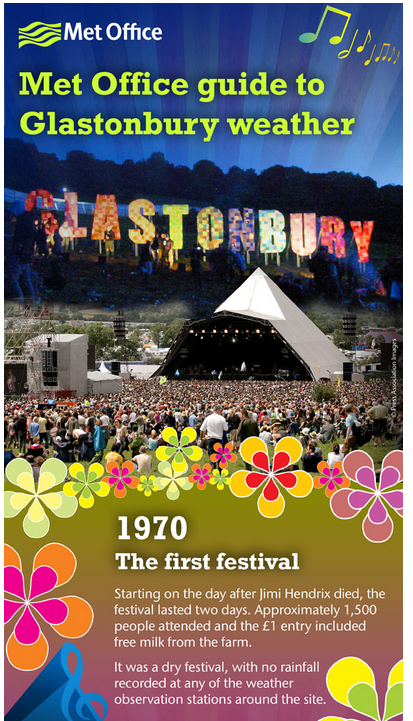How the Met Office plans and evaluates its content marketing
The weather is always a talking point in our daily lives, especially since many have experienced floods and extreme weather recently. Events like this attract even more visitors to the Met Office website - the site has anywhere from 6 million to more than 24 million unique users per week, depending on external influences such as severe weather conditions and even astronomical events. As we will see, other types of events can also generate interest in the weather.
Digital marketing at the Met Office
In 2009, a dedicated digital team was introduced to manage the organization’s online portfolio, Simon Swan, is head of digital marketing at the Metoffice. You may also recognise Simon's name as a Smart Insights Expert commentator on digital and content marketing strategy. A key part of the digital strategy for the Metoffice today is to use content to give site visitors an enhanced online experience and to look at opportunities to generate more visits through integrating content marketing and SEO.
The Met Office is the UK’s National Weather Service. As a Trading Fund within the Department for Business, Innovation and Skills, the Met Office operates on a commercial basis delivering over 4 million individual services for the UK public, Government, Armed Forces and businesses as well as countless other customers around the globe. The organization provides expert local and national forecasts as well as services such as weather warnings, updates on how climate can affect health (e.g. pollen levels), how conditions are affecting transport networks or hospitals, forecasts for military operations across the globe and research into climate change.
Content marketing at the Met Office
To differentiate in a competitive market, the Met Office overhauled its content marketing strategy to better meet the needs of its audience and to attract more visits through SEO. According to Simon Swan, we:
"we base our content plan on the insights we get from analytics, monitoring factors such as page referrals, time on page and visitor numbers.
For example, we know that in the lead up to Glastonbury music festival, we see a huge spike in users seeking weather predictions for the area.
To harness this and further improve visitor experience, we create bespoke Glastonbury and festival-related content, for example an infographic of milestones in Glastonbury’s history, or partnering with a brand that appeals to the specific demographics using the site, such as the Wellington boots brand Hunter. We then promote these through our home page and social media channels to further drive traffic.”
This is the Glastonbury weather events page and here is an example of the infographic.

Analysis of content marketing effectiveness
To support its content marketing initiative, due to the very high traffic volumes the website receives, robust analytics were essential to report on the site’s performance and visitor behaviours. Following a procurement process to source a suitable analytics solution, the Met Office selected Webtrends, a global leader in digital marketing optimization and relevance through real-time, unified analytics and customer intelligence.
This insight enables the Met Office to optimize content around visitor interests for a greater online experience, and to provide key metrics and site ‘hot spots’ to advertisers to help them maximize their investment.
The new analytics platform gives greater understanding of how well marketing campaigns are performing, how this affects visitor behavior, a greater awareness of seasonal trends and a clearer understanding of which pages attract the highest interest.
With this insight, the Met Office can invest in marketing resources and provide relevant content that is better aligned with customer interests, and can syndicate the content to other authority newswires and syndication partners to attract more relevant traffic to the Met Office website.
Swan summarizes the approach used to adapt content as part of real-time marketing:
“As we have visibility into how a campaign is running, we are able to adapt marketing to react to external factors, such as unpredictable weather, online trends or current news stories to amplify hits to the website and keep campaigns relevant.”
You can read more about their campaign by downloading the Met Office case study from Webtrends.







